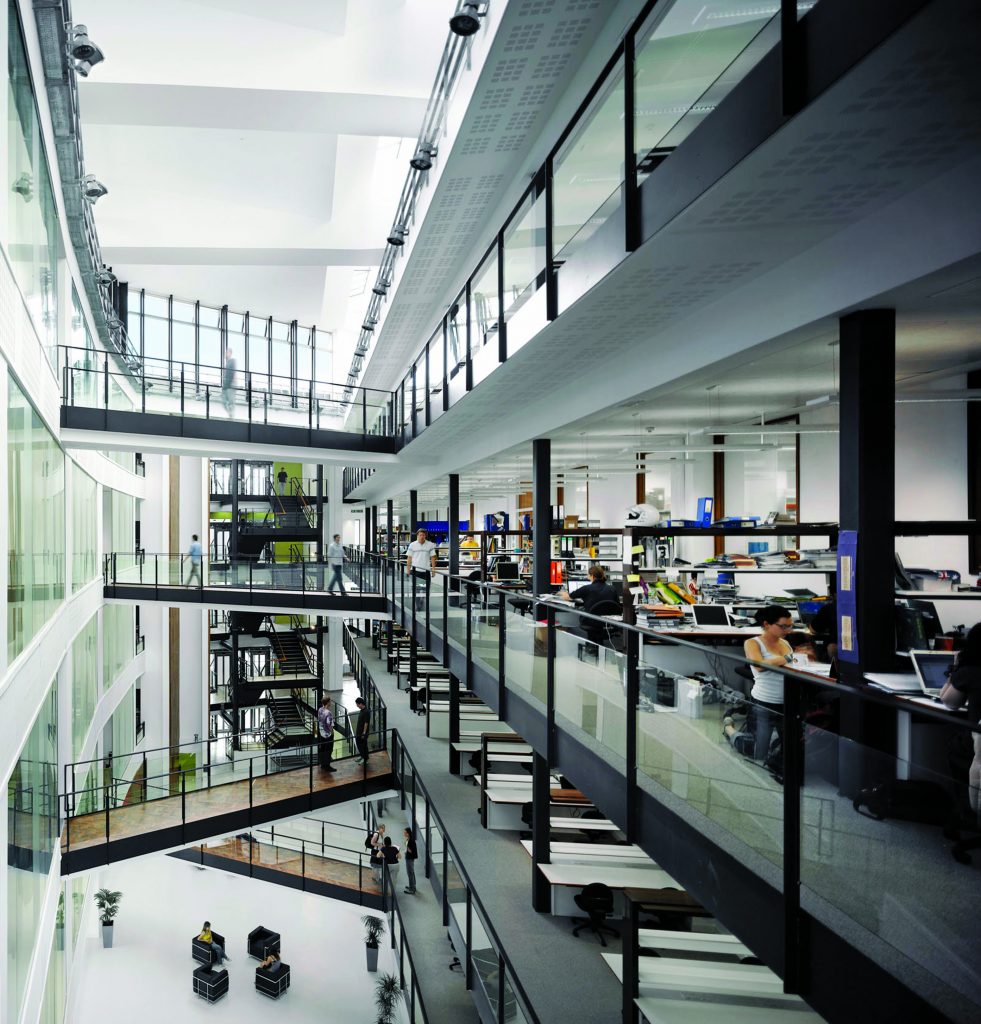Magnetic attraction
Next-generation learning spaces are needed to attract and inspire young scientists say education guru Mairi Johnson and workspace expert Nicola Gillen.
A skills shortage is looming in the science and technology worlds. Recent research shows that fewer young people than ever before are studying the science, technology, engineering and maths (STEM) subjects. At the same time, the older generation of scientists is heading towards retirement in the coming decades.
It’s clear that if science and technology are to remain strong and viable economic forces, these worlds need a makeover. The equation is simple: to create the best scientists, we need to develop the very best environments for learning and teaching for children of all ages, particularly secondary school students.
The Social Market Foundation, a UK-based public policy think tank, warns that one in five young people will need to become an engineer if the UK is to have any chance of addressing the shortage of STEM skills in the future. Meanwhile, according to a recent BBC report, the average age of an engineer in Britain is 54, with only six per cent of students studying engineering or technology. And, over the past 25 years in the US, the total number of students in university has increased by about 50 per cent, but the number of students graduating with degrees in science, technology, engineering and maths has remained constant.
One of the key opportunities to reverse this trend is in making the education environment inviting, attractive and exciting. At the moment, inspiring space is a rare thing. To a surprisingly large extent, the design of science laboratories has changed little since Victorian times. We now need to create teaching and learning facilities that reflect modern science and can compete with new technology industries.

More inspiring spaces for science can contribute to improved teaching and learning. To bring about positive change, we need to start by asking questions — how do we make STEM subjects more accessible? How do we create the ‘physical Google’ so that experiences are unexpected connections to knowledge? How can we encourage students to use, test, explore and create in the most intuitive way? How do we enable students to build on someone else’s knowledge to discover their own concepts?
School science has a lot to learn from museums such as the use of technology and exhibition design to communicate the fun and intrigue of a topic. Scientific industries are using spatial design to assist the interaction and collaboration between colleagues that assists in pushing boundaries.
We can also learn lessons from a piece of AECOM research for the UK government — called Project Faraday. This looked at how science could be taught in secondary schools in the UK, to ‘develop design ideas that can act as ‘exemplars’ for science provision, to inspire and inform all future building projects’.
Key findings on environments from research
It was recognised that teaching environments need to be more inspirational, and that they need to encourage curiosity. We know that space is an active force with the ability to bring people together in ways that encourage exploration, collaboration and discussion or silence and disconnectedness.
Innovation should be considered at the level of the school or institution rather than on a subject‑by‑subject basis. This means linking subjects for project‑based learning days or teaching through a particular theme for a period of time.
Innovative environments do not need to cost more, in particular the active use of circulation areas, can support the creation of innovative science environments so that learning happens in a variety of places and students can choose what suits them best.
Innovation in science environments does not mean that traditional science spaces such as laboratories will no longer be provided, but the way these spaces are used may be different. For example students may use a well‑equipped lab for 20 minutes to carry out an experiment, but then move to an ordinary classroom for the write‑up and discussion while another group takes a turn in the lab.
More multipurpose, adaptable spaces are needed that are suitable for interdisciplinary teaching. The implementation of new teaching and learning strategies and innovative science spaces may require staff to work in very different ways. It is essential that a change‑management approach is taken and that staff are involved in this process.







